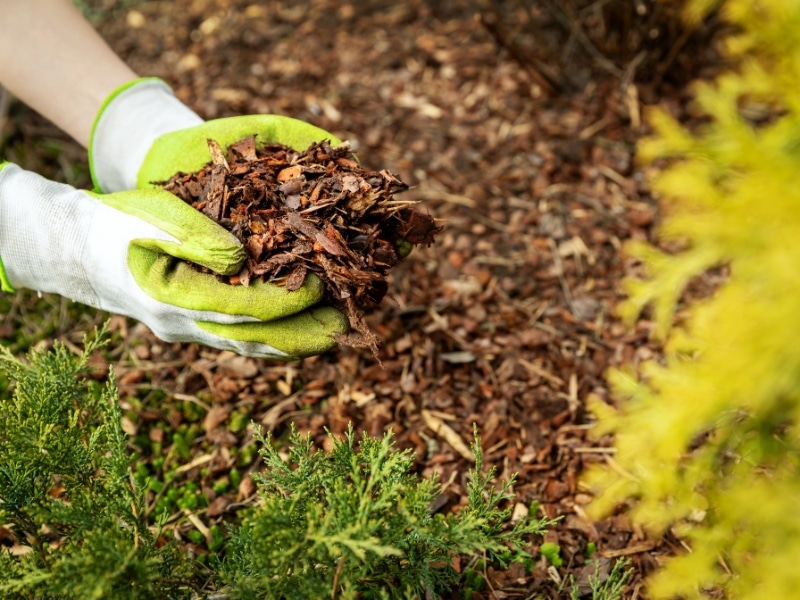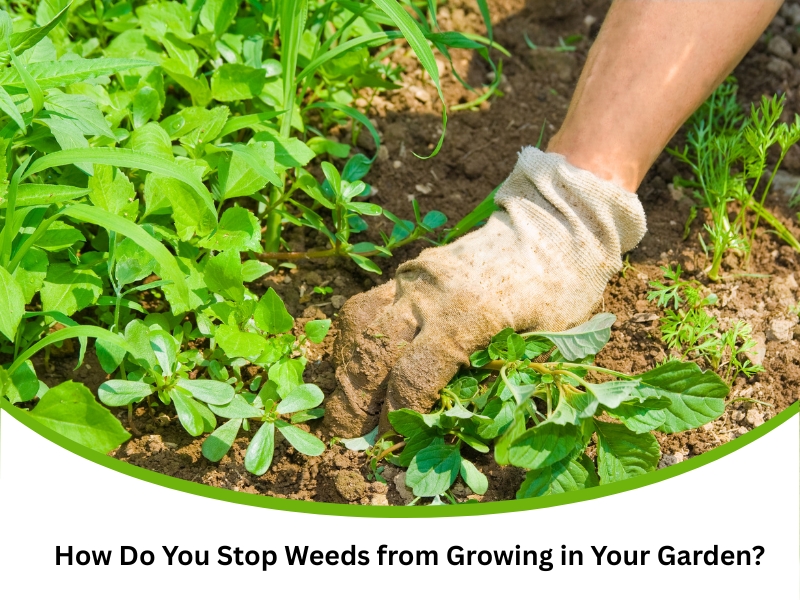Weeds can quickly turn a thriving garden into a battleground. They compete for nutrients, water, and sunlight, often outpacing your desired plants. Practical strategies exist to stop weeds from growing, focusing on natural methods that maintain the health of your garden without relying on harsh chemicals. This article explores those approaches so you can take control without compromising your soil or plant health.
What causes stubborn weeds to take over garden spaces?
Weeds don’t just appear out of nowhere — their dominance usually stems from overlooked conditions in your garden. If you’ve noticed them spreading like wildfire, you’re not alone. The reasons they take hold are more preventable than most people realise:
- Disturbed soil: Turning soil may seem productive, but it often brings dormant weed seeds to the surface where they can sprout.
- Bare patches: These open spaces are prime real estate for airborne seeds to land and germinate quickly.
- Excess moisture: Overwatering or poor drainage can create a soggy environment perfect for certain weeds.
- Unbalanced nutrients: Poor soil health allows weeds — especially fast-growing species — to overpower weaker plants.
Once weeds find a foothold, they’re like uninvited guests who refuse to leave. This makes it vital to discover effective weed control solutions for your garden that address not just the visible problem but the underlying causes.
Which common mistakes make weed growth worse over time?
When weeds keep returning despite your best efforts, your routine might be doing more harm than good. Several practices unintentionally give weeds the upper hand:
- Weeding inconsistently: Waiting until weeds have matured gives them time to drop seeds and spread.
- Applying mulch too thinly: Less than 5 cm won’t block light effectively, letting seedlings emerge.
- Over-fertilising: Nutrients don’t discriminate — weeds absorb them too and grow fast.
- Letting lawn edges fray: Loose or ragged edges give weeds a clear entry point into garden beds.
Avoiding these missteps can spare you a world of frustration. It’s helpful to understand how garden weed removal improves lawn health, not just cosmetically but in terms of soil function and plant resilience.
Is your current routine helping weeds thrive?
Even when you’re hands-on with garden care, some habits give weeds a leg up without you realising. It’s not just what you do but how and when you do it that matters:
- Watering at night: Damp overnight conditions are ideal for fungal growth and weed germination.
- Failing to clean tools: Tiny weed seeds can cling to hoes, spades, and gloves, travelling across your garden unnoticed.
- Skipping seasonal adjustments: Weeds behave differently in each season — ignoring this lets them sneak through gaps in your routine.
- Mowing too low: Cutting grass short exposes soil and makes it easier for weeds to sprout.

Take a moment to assess whether you’re unintentionally creating conditions that help weeds thrive rather than suppress them or stop weeds from growing.
How can you stop weeds from growing without harsh chemicals?
You don’t need to reach for a chemical spray every time weeds show up. Plenty of effective, natural options get the job done without harming soil microbes or nearby plants:
- Boiling water: It’s simple but powerful — direct heat destroys plant cells instantly.
- Vinegar sprays: High-acidity vinegar, especially when combined with a few drops of dish soap, strips the protective surface of weed leaves.
- Pulling with the root: Tedious, yes, but highly effective for deep-rooted weeds like dandelions.
- Cover planting: Plants like clover or creeping thyme can act as living mulch, crowding out unwanted growth.
These strategies are not only effective but also better for the long-term health of your soil. You’ll be leaning into natural methods to prevent weed growth, maintaining balance without upsetting your local ecosystem.
Which natural remedies are most effective for weed prevention?
It’s one thing to get rid of weeds — it’s another to keep them from coming back. These natural methods help shut the door on weeds before they become a recurring headache:
- Corn gluten meal Is Used as a pre-emergent, stopping seeds from taking root without harming existing plants.
- Mulching with straw or bark: Thick, organic mulch keeps light out and moisture in.
- Solarisation: Laying clear plastic over moist soil for 4–6 weeks bakes weed seeds below.
- Strategic plant pairing: Companion plants, such as marigolds or basil, naturally deter weed-prone species.
These solutions make your garden less inviting to invaders and more stable overall. They’re ideal for anyone aiming for a lush garden that doesn’t require constant maintenance.

Can mulch and soil prep stop weeds from growing?
Absolutely — mulch and soil prep are often the unsung heroes of weed prevention. Done right, they set your garden up for success before weeds even show up:
- Thick mulch application: Aim for at least 7 cm deep to smother seeds trying to germinate.
- Compost enrichment: Healthy soil fosters vigorous plant growth, which naturally crowds out weeds.
- Landscape fabric: This long-lasting barrier, placed under mulch, prevents most weed growth while still allowing water to pass through.
- Aerating soil properly reduces compaction, allowing roots to expand faster than most weeds can compete.
These methods play a crucial role in integrated weed management strategies for garden care, which combine physical, biological, and ecological techniques for long-term success.
Weed Control Methods Comparison
Method | Effectiveness | Environmental Impact | Cost | Maintenance |
Boiling water | Moderate | Low | Low | Low |
Vinegar solution | Moderate | Low | Low | Moderate |
Manual removal | High | None | None | High |
Ground covers | High | None | Medium | Low |
Mulching | High | None | Medium | Low |
Corn gluten meal | Moderate | Low | Medium | Low |
Solarisation | High | None | Low | Low |
Companion planting | Moderate | None | Low | Low |
How do you know if your efforts to stop weeds are working?
Prevention tactics are only as good as their results. Here’s how to track your progress and adjust your methods where needed:
- Weekly inspections: Checking often helps you catch new sprouts before they spread.
- Taking photos: Comparing your garden’s state month to month shows progress you might not notice on a daily basis.
- Soil quality checks: If your plants are thriving and the weeds are thinning out, your soil is likely improving.
- Watch for regrowth timing: If weeds return more slowly or in smaller numbers, your strategy is paying off.
This sort of monitoring helps confirm that you’re on the right track. If things start to slip, you can pivot early, rather than having to do significant damage control later.
Final thoughts
Stopping weeds from growing isn’t about using stronger chemicals — it’s about building smarter systems. Whether you’re adjusting your watering habits, layering mulch more effectively, or incorporating companion plants, minor tweaks can make a significant difference. For tailored advice or help with a specific weed issue, you might benefit from exploring how A Bargain Gardener handles stubborn weeds.


